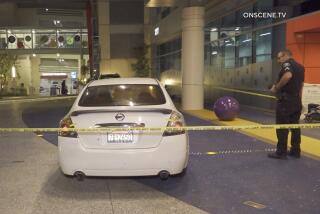Experts Assess Effects of Wounds to Children
- Share via
Children with gunshot wounds often suffer greater physical damage than adults with a similar wound, health experts say. But children might recover faster.
Because children are smaller, a bullet wound has the ability to damage an organ more severely, said Dr. Neal Kaufman, an expert in adolescent medicine at Cedars-Sinai Medical Center.
“If a bullet wound is an inch, for example, and it strikes a baby whose liver is only three inches big, you’re going to damage more. Everything about a child is proportionately smaller,” Kaufman said.
Children hit by gunfire also are at risk of dying more quickly because of blood loss, experts say. Children have less blood and are likely to go into shock more quickly than adults.
Gunshot victims often suffer from hypothermia, a rapid lowering of body temperature. Because children are especially prone to hypothermia, a gunshot wound can be more serious, says Dr. Thomas Scalea, director of trauma and critical surgical care at Kings County Hospital in Brooklyn, N.Y.
“We know hypothermia is a real problem in trauma patients,” Scalea said. “You have to give them a lot of fluid and lot of blood, which are cold. That will be a problem in children.”
But, Kaufman said: “Children are very, very resilient. Kids recover from injuries quicker.”
Medical experts have only recently begun to examine the health effects of gunfire on children as the rate of shootings among children rises.
Firearm homicides among youngsters 5 and younger have increased 46% since 1984, according to the U.S. Centers for Disease Control’s National Center for Health Statistics.
Firearms slayings increased 27% among children 5 to 9.
According to a 1988 study by Dr. Barbara Barlow, a New York trauma surgeon, gunshot wounds to children in major urban centers have increased 300% since 1986. Barlow found that gunshot wounds to children 16 and younger make up 4% of all pediatric trauma admissions nationally and 10% in inner-city pediatric trauma centers.
More to Read
Sign up for Essential California
The most important California stories and recommendations in your inbox every morning.
You may occasionally receive promotional content from the Los Angeles Times.










